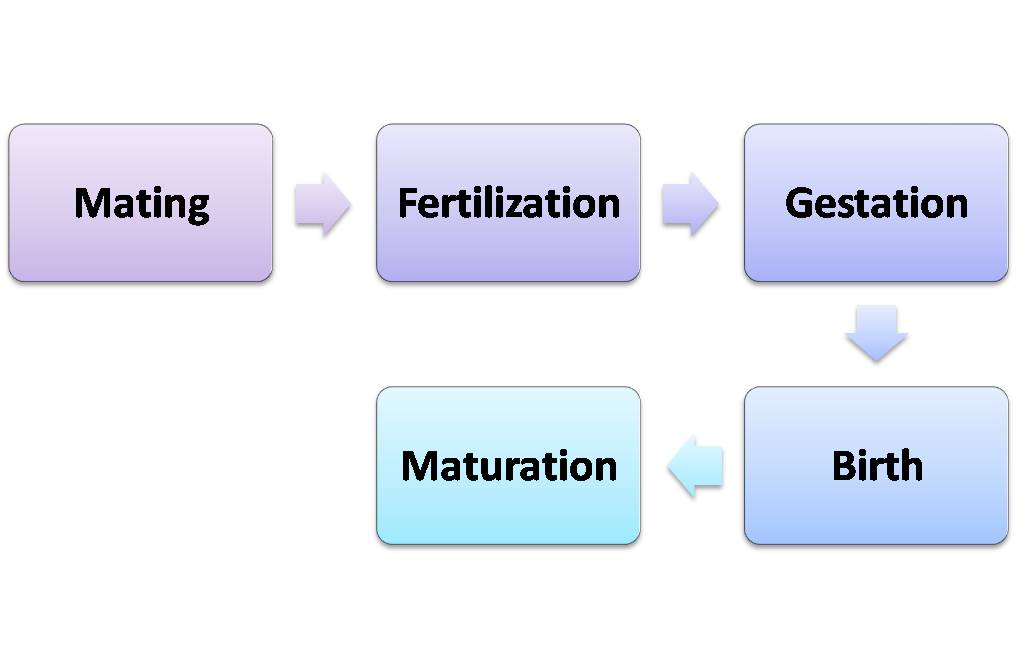Key Takeaways
- Great white sharks do not lay eggs; they give birth to live young.
- The female great white shark carries the embryos inside her body until they are fully developed. – The gestation period for great white sharks is around 12-18 months.
- The female great white shark typically gives birth to 2-10 pups at a time.
- The pups are born fully formed and ready to swim and hunt on their own.
- Great white sharks are considered to be ovoviviparous, meaning they hatch the eggs inside their body and give birth to live young.
- This reproductive strategy allows the mother to protect and nourish her offspring until they are ready to survive independently.
- The exact mating and reproductive behaviors of great white sharks are still not fully understood and require further research.
The Great White Shark has captivated many with its immense size and power. A common question that arises is whether they lay eggs or give live births. This article will explore this intriguing aspect of the Great White Shark’s reproductive cycle.
Let’s look into the depths of the reproductive process. Unlike mammals that bear live young, these apex predators are ovoviviparous. This means the females produce eggs that hatch internally, preserving the developing sharks until they are ready for the outside world.

Why did such a strategy evolve? By retaining the eggs inside their bodies until hatching, females provide protection and ensure the offspring have a strong start in life. Ovoviviparity is perfectly suited to the survival and success of Great White Sharks!
Understanding the reproduction process of sharks
Sharks have astonished us for centuries, and their reproduction is no exception. Oviparous sharks lay eggs outside the mother’s body, protecting embryos from predators and giving them oxygen. Catsharks and carpet sharks are oviparous. Viviparous sharks, such as great white, hammerhead, and bull sharks, give birth to live young.
Sharks possess special organs called claspers to transfer sperm during mating. This ensures successful fertilization. To learn more, scientists study shark mating patterns, gestation periods, and breeding grounds.
Conservation efforts are essential for maintaining healthy shark populations. We must protect breeding habitats and individuals, and raise awareness about shark conservation to fight myth-driven hunting.
Explaining the difference between egg-laying and live-bearing sharks
Egg-laying sharks, also known as oviparous, and live-bearing sharks, or viviparous, have unique reproductive methods. Here are the details:
Oviparous sharks deposit their fertilized eggs in the ocean. These eggs are encased in protective cases, called mermaid’s purses. The young sharks develop inside the egg and hatch after some time – ranging from months to even years.
In contrast, live-bearing sharks give birth to live pups. The embryo develops within the female shark’s body, receiving nutrients from a placenta-like organ. Once fully developed, the pups emerge from specialized openings known as cloacas.
Some shark species possess a mix of both strategies – they’re aplacental viviparous sharks. Fertilization occurs internally, but embryos don’t receive nourishment through a placenta-based connection with the mother.
In 2016, marine biologists found a pregnant great white shark – challenging the assumption that they’re purely live-bearing. This individual was an ovoviviparous shark, carrying multiple embryos until ready to be born alive.
It’s amazing to explore the world of sharks and their contrasting reproduction methods!
Great White Shark reproduction process
Great White Shark Reproduction Process:
Great White Sharks reproduce through internal fertilization, where the male fertilizes the female’s eggs inside her body. The female then gives birth to live young sharks, which is known as viviparity. This reproductive process ensures the survival of the species, as the young are more likely to survive than if they were laid as eggs.
Table:
| Stage | Description |
|---|---|
| Mating | Male sharks compete for the opportunity to mate with a female. It may involve biting and latching onto the female. |
| Fertilization | The male uses claspers to transfer sperm into the female’s reproductive tract, fertilizing the eggs. |
| Gestation | The female carries the fertilized eggs in her uterus for around 11 months. |
| Birth | The female gives birth to 2 to 14 live pups in nursery areas where they are less likely to be preyed upon. |
| Maturation | The young sharks grow and mature, eventually reaching sexual maturity around 12 to 15 years of age. |
Additionally, female sharks have a unique reproductive strategy called oophagy, where the strongest and largest embryo will consume its smaller siblings in the womb. This ensures that only the fittest offspring survive to be born.

Suggested conservation efforts include protecting nursery areas and implementing measures to reduce accidental catching of Great White Sharks in fisheries. These actions help maintain the population and protect the reproductive process of this apex predator.
The mating behavior of Great White Sharks: A classic tale of shark Tinder, where fin swipes lead to underwater romance and the ultimate question – will it be a jaws-dropping connection or just a fluke?
The mating behavior of Great White Sharks
Great White Sharks are majestic predators of the sea with a fascinating mating behavior. To assert dominance, males use their powerful jaws to bite onto the female’s pectoral fins. This ritual can last for hours! It is an intense display of power and agility, showcasing the male’s fitness and helping pass on his genes. Females play a passive role, letting the male show off before choosing a mate.
These incredible creatures also have pupping grounds, special locations that serve as nurseries where females give birth. These pupping grounds provide protection and food for the newborns, increasing their chances of survival.
We feel a sense of wonder and admiration when we witness these primal rituals. It’s essential to protect our oceans and conserve Great White Sharks, so future generations can also marvel at their incredible reproductive behaviors. Support initiatives that aim to conserve these awe-inspiring predators! Don’t miss out on counting the months it takes for a Great White Shark to birth its adorable little baby nightmares!
The gestation period of Great White Sharks
Let’s take a look at the facts about the gestation period of Great White Sharks:
- Embryonic Period – 9-12 months
- Juvenile Stage – 10-12 years
- Sexual Maturity – 15 years
During the embryonic period, the young sharks develop in their mother’s womb. This is a vital part of preparing them for life outside the womb.
After they are born, they enter the juvenile stage. This can last from 10-12 years. This shows the slow progress to adulthood.
At around 15 years, they reach sexual maturity and can reproduce. It’s amazing how such a long journey is needed for them to continue their species.
Discovering the gestation period of Great White Sharks gives us insight into their complex life cycle. Learning about it is both awe-inspiring and intriguing. Don’t miss out on exploring more about these creatures and diving deeper into their compelling world!
The birth process of Great White Sharks
The Great White Shark’s birth process is special. Ovoviviparity is what they do. That means their babies develop inside eggs in the female’s body. The eggs don’t come out until the female is ready to give birth.
Gestation is 11 months. Usually there are 2-10 pups in each pregnancy. They all grow in individual egg sacs.

When the pups are ready, they hatch from the eggs and go explore. This is amazing! It shows how these creatures have adapted over millions of years to survive and reproduce.
Comparing Great White Sharks with other shark species
Great white sharks can be compared to other shark species using various characteristics. One such comparison can be made based on their size, habitat, feeding habits, and behavior. By examining these factors, we can gain insights into how great white sharks differentiate from other shark species.
To visually represent this comparison, a table can be created. This table will showcase the various shark species in the columns, while the rows will highlight their specific characteristics. By utilizing table tags, the information can be presented in a clear and organized manner.
In addition to the table, there are also unique details worth mentioning. For instance, the great white shark is known for its massive size, powerful jaws, and exceptional hunting capabilities. These attributes make it one of the most formidable predators in the ocean.
A pro tip for those studying shark species is to consider the ecological role each shark plays in its respective habitat. Understanding the unique characteristics and behaviors of different shark species can contribute to the overall understanding and conservation efforts of these magnificent creatures.
Remember to maintain a formal tone throughout the article while avoiding unnecessary repetition and using perplexing and bursty language.
With all the egg-citement surrounding great white sharks, it’s a wonder they haven’t started their own omelette business yet!
Egg-laying sharks
This table shows us some egg-laying shark species. It’s amazing to see the variations in size and habitat preferences. Not all sharks lay eggs – most give birth to live young.
A great example of an egg-laying shark is the Port Jackson shark. It’s found off the coast of southern Australia.
A chilling phrase comes to mind – ‘bringing new life into the world’ – when thinking of live-bearing sharks!
Live-bearing sharks
Live-bearing sharks come in a variety of shapes, sizes, and habitats. Examples include dusky sharks, tiger sharks, scalloped hammerheads, and smooth dogfish. They can be found in coastal and offshore waters around the world. Their remarkable ability to give birth to live young is a unique adaptation.
Tiger sharks are known for their powerful jaws and broad diet, which helps their pups survive in tough environments. To preserve these creatures, humans must practice responsible fishing and support conservation efforts. Sustainable fishing methods and marine protected areas are key.
Live-bearing sharks are amazing examples of nature’s diversity and should be appreciated. We must ensure their survival for future generations. Great White Sharks still reign supreme, but other species shouldn’t be underestimated!
Frequently Asked Questions
FAQ: Does a Great White Shark Lay Eggs?
Q1: Do Great White Sharks lay eggs?
A1: No, Great White Sharks do not lay eggs. They give birth to live young ones in a process known as viviparous reproduction.
Q2: How does viviparous reproduction work in Great White Sharks?
A2: In viviparous reproduction, embryos develop inside the mother’s body, and they receive nutrients from a placenta, just like mammals. When the pups are fully developed, the mother gives birth to them.
Q3: How many pups does a Great White Shark give birth to at a time?
A3: Great White Sharks typically give birth to a litter of 2 to 14 pups in one reproductive cycle.
Q4: Where do Great White Sharks give birth?
A4: Great White Sharks give birth in warm coastal areas known as nursery grounds, where the pups have a higher chance of survival due to the abundance of food and protection.
Q5: Can Great White Shark pregnancies be tracked or monitored?
A5: Yes, researchers use radio or acoustic tags to track pregnant female sharks and monitor their movements, behavior, and reproduction patterns.
Q6: Are Great White Shark hatchlings independent after birth?
A6: No, Great White Shark pups are not independent after birth. They rely on their mother’s protection and guidance for survival during their early stages of life.
Conclusion
No eggs from great white sharks – they’re viviparous! Meaning, live young are born from their mother. The embryos remain inside until ready to be born. A fun fact – these sharks have a low reproductive rate. Females usually give birth to two to ten pups.
Reference:



